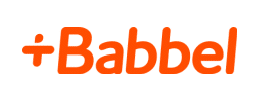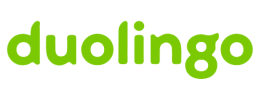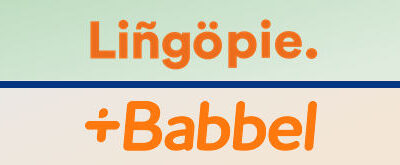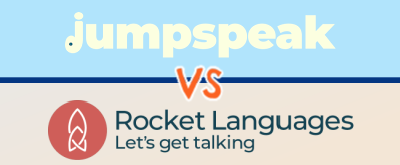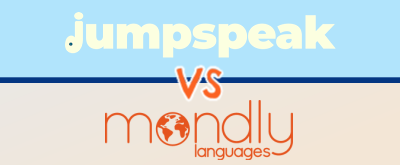Babbel and Duolingo are two of the most popular language apps in the world, and while the two certainly share several similarities, they also differ in several key respects. In this comparison, we highlight the pros and cons of each language learning program so you can pick the one that best fits your budget and learning style.
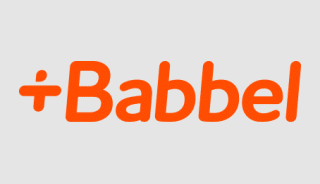
Sale: 55% OFF
Applied in Cart
|
$8-$15/mo |
Our pick for beginners. Duolingo has Babbel beat on price, but this is the perfect newbie app with quick lessons and foundational content. |
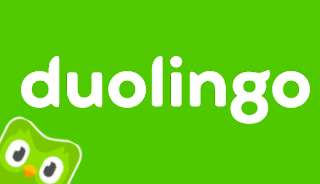
Free Version
Sign Up Today
|
$7/mo |
An app built around fun and fast lessons. We like the price tag and engagement, but this app is too game-like for us. Babbel’s teaching style sticks with you. |
Video: Our Thoughts On These Apps
In the video above, team member Bianca breaks down our team’s thoughts on how these two apps compare after using each for almost a year.
Editor’s Choice
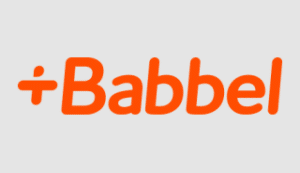
Babbel
- Multiple Subscription Options
- Money Back Guarantee
Pros
- Lessons are more comprehensive than the Duolingo lessons
- Engaging lessons comprised of quick-hit practice drills
- Regular review sessions help to drive home material retention
- Concise, helpful grammar instruction
- Bonus podcasts are an excellent supplemental resource
Cons
- No free version available like Duolingo
- Lessons could use more in-depth conversational practice
How The Babbel & Duolingo Apps Work
To kick off this review, assuming you know nothing (or at least very little) about each language program, let’s begin with an overview of how each app works.
Babbel
When you open up the Babbel app for the first time, there are different learning levels. For example, some of these levels include Newcomer, Beginner I, Beginner II, Intermediate, etc.
Within each of these levels, there are typically around a half dozen “courses,” which all cover different thematic topics. These thematic topics include cooking, sports, cinema, and things of that nature.
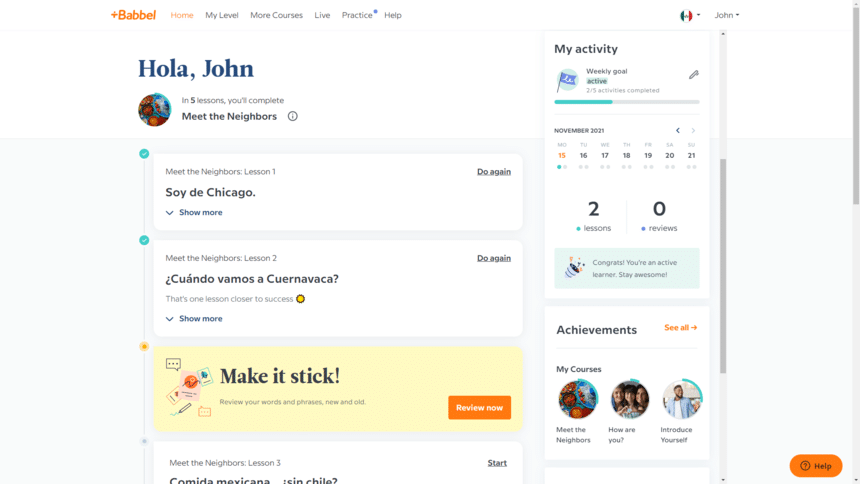
Then, within each course, there is anywhere between 5 and 15 lessons to complete. Thus, the organization of the course is something like a pyramid. You’ve got overarching levels at the top, then courses under that, and lessons at the bottom.
Assuming you have no working knowledge of the language that you’re learning, you will start with the Newcomer level, and shoot to complete one lesson per day.
As for the lessons themselves, each one is pretty short at around 15 minutes in length. Though not as short as a typical Duolingo lesson, they generally go by pretty quick.
This is largely the case because the Babbel lessons are built around a series of several quick-hit, interactive drills. Drill types include listen-and-repeat exercises, digital flashcards, fill-in-the-blanks, matching pairs, matching phrases to images, completing mock conversations, short instructional tips on grammar, and a few more.
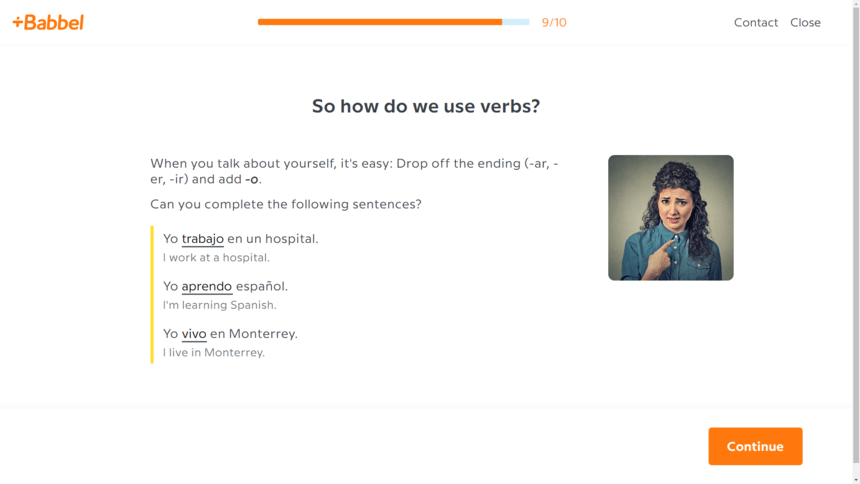
In essence, Babbel’s framework is built around diverse, hands-on exercises that move fast. In the course of a single lesson, they present the same content in a variety of ways and make you interact with the material from different perspectives.
Outside of the lessons, there are also daily review sessions based on the concept of spaced repetition, plus some extras, like games, audio lessons, podcasts, and a digital magazine. Overall, in terms of features and functionality, it’s a pretty comprehensive app.
Duolingo
Turning to Duolingo, while sharing some similarities with Babbel, their program on the whole is fairly different.
It is similar in that the Duolingo lessons are also generally shorter than lessons from other language apps, and they use a healthy variety of drills within lessons as well, but generally speaking, the program has a much different design.
Rather than employing the pyramidal level-course-lesson structure that Babbel uses, with Duolingo, you follow a learning path. The path snakes through hundreds of units, and you work through what I would call “stepping stones.” Each stepping stone is in essence a collection of lessons, and each one holds four to six lessons.
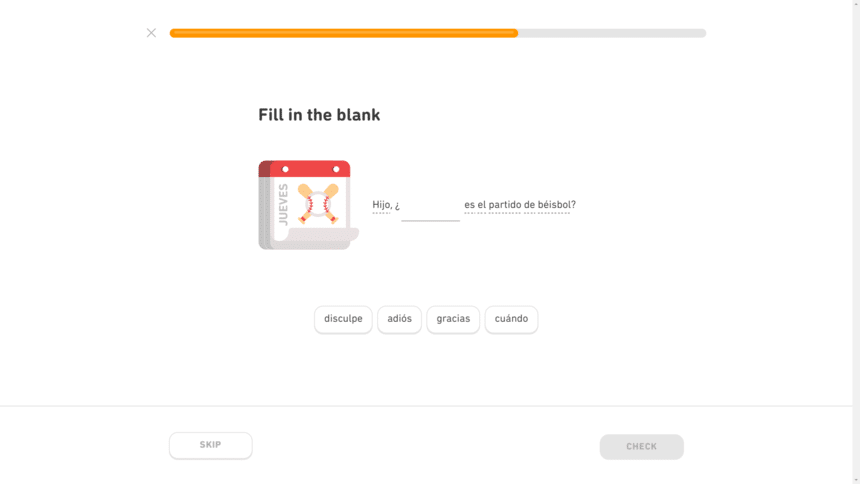
The typical Duolingo lesson takes just 5 minutes to complete, and consists of a set of rapid fire drills. This includes listening drills, fill-in-the-blanks, matching pairs, verbal practice, and writing full sentences, among others.
These lessons go by incredibly fast (even faster than Babbel’s), and a lot of times you’ll end of doing two or three lessons in one sitting.
However, comparing lessons between the two apps isn’t the full picture, as Duolingo’s program is also fundamentally different. Where Babbel goes deeper into the instructional side of language learning, with grammar notes and detailed teaching points in each unit, the Duolingo program is more so meant to be like a game.
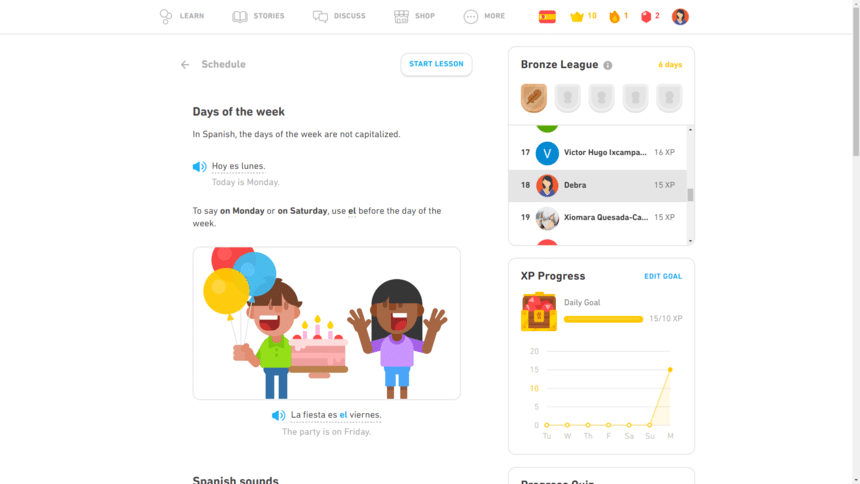
You connect socially with friends, earn XP points, compete in leagues, and buy things with gems. It is much more game-like than Babbel’s program on the whole.
From a high level, however, that is how the two companies compare. The lessons are somewhat similar in terms of length and design, but the Babbel program overall is more in-depth with their language instruction, while the Duolingo app is more so intended to be like a fun game.
Cost Comparison
Before we dive into talking about what I like and don’t like about each program, I want to briefly discuss pricing.
Starting with Duolingo, they are best known for their free version. Their basic plan (which anecdotally, it seems like about half of people use) is free. You just download the app, make a profile, and start doing lessons.
Obviously though, there are some drawbacks with the free version, such as limited daily mistakes, tons of ads, and limitations around navigating new and old lessons. Therefore, if you want to upgrade to remove those issues, you can sign up for Super Duolingo, their premium version.
Super Duolingo costs $84 for an annual subscription, breaking down to about $7 per month. Or alternatively, they also have a family plan if you want to split with friends or family. That Super Duolingo family version costs $120 per year, or $10 per month.
Babbel, on the other hand, doesn’t do the freemium model—they just have three different subscription options. Babbel offers a 3-month plan, a 6-month plan, and a 12-month plan, which range from around $6 to $12 per month after discounts.
Plus, for those people who are perhaps looking to learn two or three languages, or simply wanted a more permanent app, Babbel also offers a lifetime plan. That costs around $300 and includes access to all Babbel languages.
Thus, stacking these two apps up side-by-side, so long as you’re not talking about Duolingo’s free version, they are basically priced the same. Babbel and Duolingo each cost somewhere in the $6 to $10 per month range, depending on plan and discounts.
Why Babbel Is Better Than Duolingo
At this point, you should have a good idea of how each app works and what they cost. So now let’s get to the juicy stuff—the pros and cons of each app. And specifically, I want to discuss where each language learning program is superior to the other. Let’s start with Babbel.
Lessons Are More Comprehensive
The thing I like most about Babbel’s program over Duolingo is that their lessons are longer and more in-depth. Within the first couple lessons of using each program, it’s obvious the Babbel lessons are more comprehensive and go deeper in terms of instruction.
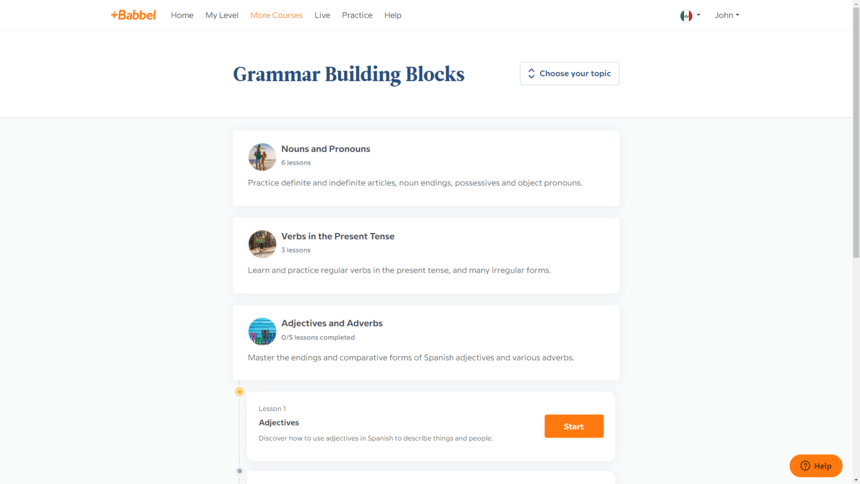
And this isn’t the case just because the lessons are longer. The Babbel exercises hit the material you’re covering from more angles, and they frequently weave teaching points right into the lesson.
This is in opposition to Duolingo, which mainly just rolls through vocabulary. There really isn’t much direct instruction within the Duolingo program. Thus, in terms of having a more developed body of coursework and actually teaching, Babbel’s app is definitely superior.
Helpful Grammar Explanations
My second win for Babbel is grammar. The bottom line is that Duolingo doesn’t include much grammar instruction at all within their program. The only thing they give you are these little “guidebooks” at the start of each unit, which provide high-level grammar coverage.
In contrast, Babbel works grammar into each and every lesson. There are exercises that teach grammar directly, as well as tips and callout boxes that frequently appear to work in teaching points (similar to Lingopie).
Grammar instruction is just more pervasive in the Babbel program—but not to the point of being too much. I actually really like how Babbel weaves it in.
Natural Language
Another advantage for Babbel is how they use natural language. In other words, they teach you things people really say.
For those of you that don’t know, this is one of the widest complaints about Duolingo. Many of the phrases and sentences that Duolingo teaches you are nonsensical. It consists of a lot of stuff you’d never say.
I’ve seen things like “the owl wears a jacket” and “my foot is very tall.” It is just a lot of nonsense stuff like this.
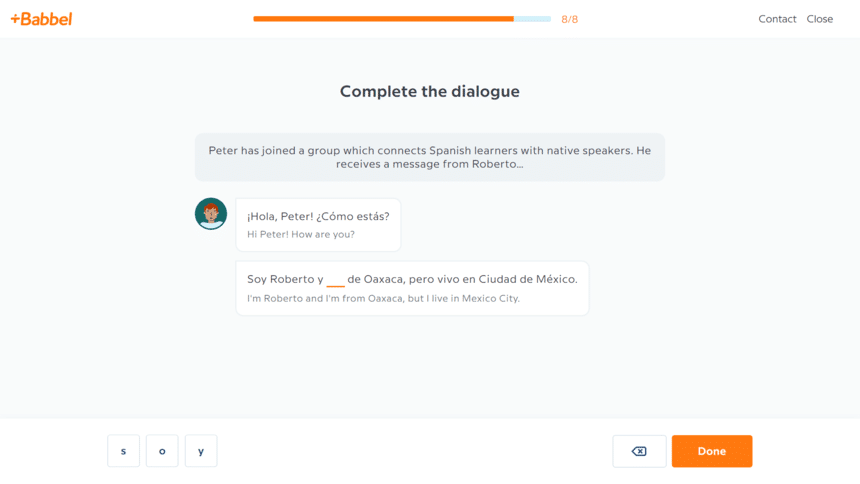
To me, it seems like the Duolingo algorithm grabs random verbs, adjectives and nouns, and just combines them into a sentence.
Now, Babbel on the other hand, is very good about teaching you more natural language chunks. So instead of learning something like “the milk is purple,” you’ll learn “the water is hot.”
It’s a small but important point, as when you’re learning a new language, a lot of times it’s patterns and language chunks that you learn the quickest.
Listening Comprehension Skills
The last advantage in Babbel’s favor, and this is a big one, is that Babbel does a better job than Duolingo of developing your ear for a language. In other words, I think Babbel’s a lot more effective for building your listening comprehension skills.
I find this to be the case for a couple reasons. For one, Babbel uses more frequent audio exercises. I would say that you probably get twice as many direct audio exercises in each Babbel lesson.
Then second, even for non-audio drills, Babbel just about always repeats the word out loud. Even if you’re just working on a matching pairs drill, the word or phrase will be repeated. This way, you’re hearing the words and phrases constantly over the course of a lesson.
To compare that structure to Duolingo, they don’t repeat much aloud. If you have to type out a word, when you get it right, it will just make a chime sound, do a little motion graphic, and you move on. So I like that Babbel reinforces the audio of new words over and over.
👉 See Our Review of Babbel Spanish Here
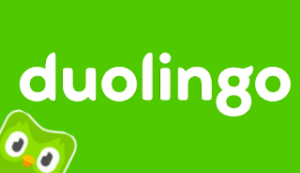
Duolingo
- Free Version
- 40+ Languages
Pros
- Very affordable (free and paid plans)
- Extremely short, bite-sized lessons (~5 minutes)
- Duolingo makes the learning process fun (sort of like a game)
- Decent speech recognition technology
Cons
- Free version has serious limitations (annoying ads)
- Grammar is not a focus
- Practice drills use unnatural language and sayings at times
Why Duolingo Is Better Than Babbel
Having covered the advantages in Babbel’s favor, let’s get to Duolingo’s wins.
Fun Lesson Format
My first advantage for Duolingo is just how fun they make learning. With how Duolingo ‘gamifies’ the language learning experience, their app is legitimately fun to use (and honestly, somewhat addicting).
Using Duolingo’s app is kind of like playing a questing game, and you get hooked. You earn XP points with every lesson, you can do “friend quests,” you can spend gems you earn on cool features, you compete in leagues against other users, and they bait you into keeping your streak going.
It is just a really fun, motivating environment for learning, and I very much like that aspect of the Duolingo app. Engagement is a huge factor in learning and having a fun app makes a difference.
Free Version Available
Secondly, I really like that Duolingo offers a free version. If you’re on a tight budget, you can get most all of the benefits of the app without having to drop a dime. In short, it’s the perfect program for people looking to keep things ultra-cheap.
Not to mention, it’s literally the only language app on the market I’ve used that offers a decent free version. Other language learning apps claim that they have free versions, but they don’t offer nearly as many features as Duolingo’s free plan.
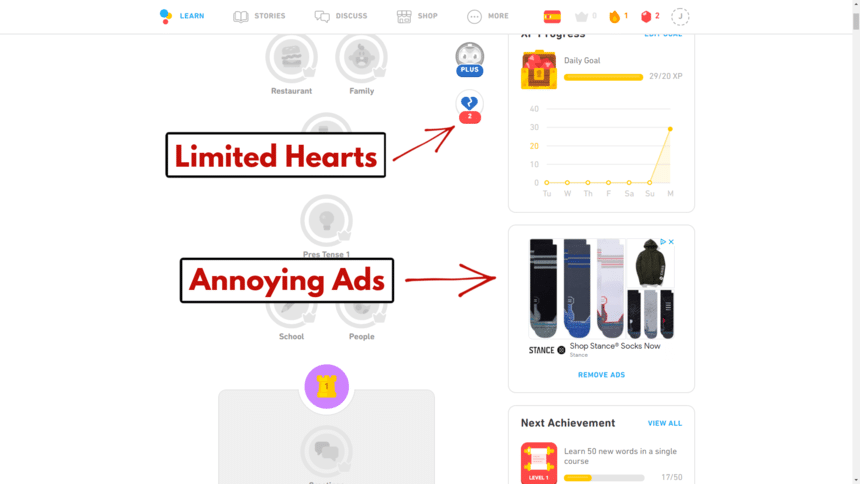
However, do just keep in mind those limitations I referenced above. You will get hit with a bunch of ads, there are limitations around navigating new and old lessons, and there are caps on your daily usage with their heart system.
Let me explain that last one. In essence, hearts are equal to mistakes, and if you make too many mistakes in a lesson, then you run out of hearts and you’re done for the day. Just keep that in mind with the free version.
Short Lessons
Another quick win for Duolingo is how short the lessons are. There isn’t a huge discrepancy between the length of each companies lessons (Duolingo’s lessons take about 5 minutes to complete and Babbel’s take about 15 minutes), but it’s enough to make a difference.
With Babbel’s lessons you can’t really pause and come back—you sort of need to get though the full 15 minutes uninterrupted.
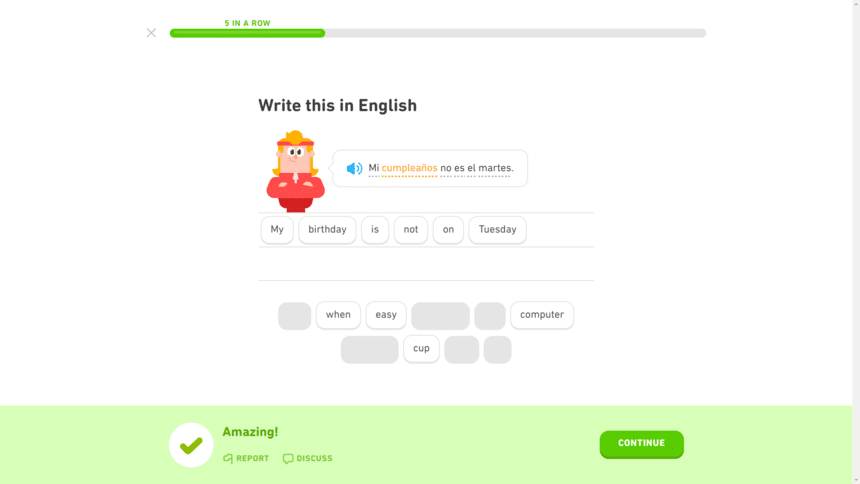
As a result, if you’re stretched for time and can perhaps only afford to learn 5 minutes here or 10 minutes there, Duolingo might be a better choice given how short their lessons are.
Lots of Repetition
My final pro for Duolingo is how their lessons hammer vocab. To be honest, this can be a pro or a con because it is a little annoying, but with how many times Duolingo hits the same word—literally two dozen times per unit—it really burns new vocab into your brain. I see that as a plus.
Verdict: Which Language App Is Better?
At the end of the day, in my opinion, if you want to choose one app or the other, I would go with Babbel all day. Their lessons are more in-depth; Babbel does a great job weaving in grammar; they hit you with daily spaced reviews; and you flat out progress a whole lot faster.
With that said, however, I do think there is some benefit to Duolingo’s short, addicting lessons, and I think the best solution of all might be to use both. I’ve been doing just that with Duolingo’s free version and it seems to work pretty nicely—the programs complement each other well.
I would suggest using Babbel as your main learning platform, doing a lesson per day, and then filling in the gaps and little breaks in your day with Duolingo. That would be a great approach to drive home vocab and keep you having fun.
After testing each language app, our team believes Babbel is better than Duolingo. With more in-depth lesson work and direct grammar coverage, Babbel simply offers the more effective language learning courses from top to bottom.
In comparison to Duolingo, Babbel offers more comprehensive lessons, better grammar explanations, and more accurate speech recognition technology. Duolingo, on the other hand, is more game-like and fun.
Although Babbel and Duolingo are similar in several respects, the two differ when it comes to speech recognition technology, grammar instruction, and verbal practice. Babbel’s lessons are longer, and Duolingo relies more on their user base to foster engagement.

